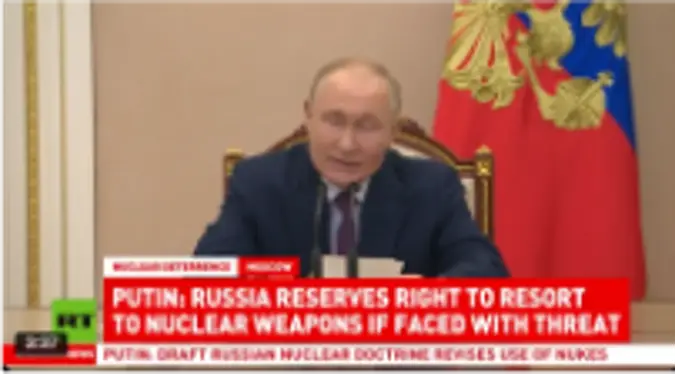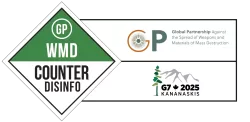Disinformation Trends
MONITORING SNAPSHOT 1
18–30 September 2024
SUMMARY
DFRLab conducts a bimonthly analysis of monitoring periods from a search query including Ukrainian, Russian and English languages to identify when spikes of CBRN disinformation narratives are spreading. This report (September 18-30) saw an increase in false allegations of ethnic bioweapon development that would be capable of targeting specific nationalities; a claim about an unspecific biomaterial transfer from Ukraine through Moldova and onto new biolab locations; allegations related to attacks on nuclear power plants (NPPs) in Russia and Ukraine; and concerning discussions of escalatory changes in Russian nuclear doctrine.

CHEMICAL DISINFORMATION:
Claims and allegations about the US recommending chemical agents for Ukraine’s attacks on Russia.

BIOLOGICAL DISINFORMATION:
Allegations about bioweapons and the use of vaccines for population control.

RADIOLOGICAL AND NUCLEAR DISINFORMATION:
Messaging promoting increased nuclear war and radiation fears and provide alleged justification for Russian attacks.
Biological Disinformation

Sources: Telegram; Twitter/X
- Unfounded claims about COVID-19 vaccines being developed bioweapons used for population control.
- Allegations on the development of bioweapons including “ethnic bioweapons” by Ukraine and Israel to harm Russia and Muslim majority countries.
- Claims about alleged transportation of biomaterials containing unspecified pathogens are being transported from Ukraine through Moldova and onto new biolab locations, all allegedly facilitated by the US. Similar disinformation campaigns have circulated in the past with accusations of biolab transfer from Ukraine to Africa (link, link).
Radiological and Nuclear Disinformation

Sources: Telegram; Twitter/X
- Claims made by Russia blaming Ukraine for attacking nuclear power plants. One narrative includes Russia alleging Ukraine attacked Enerhodar (a town close to Zaporizhzhia NPP) with drones and endangering the power plant (link).
- Continued statements from Russian actors that Ukraine is attempting to stage a provocation to justify future Russian attacks
- Concerning discussions from Russian government officials using speculation and potentially false claims to justify changing their nuclear doctrine and indicating nuclear escalation is more likely to occur (link).
- Unfounded claims of a potential small nuclear warhead detonation in Toropets, Russia and allegations of potential NATO involvement.
IDENTIFYING DISINFORMATION TRENDS
The Global Partnership against the Spread of Weapons and Materials of Mass Destruction (GP) is committed to strengthening WMD disarmament and nonproliferation efforts. Disinformation campaigns significantly undermine cooperative threat reduction efforts. The GP Counter WMD Disinformation Initiative aims to track ongoing narratives, understand their impacts and counter state-sponsored or state-adjacent disinformation across Chemical, Biological, Radiological, and Nuclear (CBRN) threats.
Narrative Trend Monitoring: As part of the GP efforts to identify, understand, and mitigate hostile CBRN disinformation, the Atlantic Council’s Digital Forensic Research Lab (DFRLab) conducts a bimonthly search query of state-sponsored or state-adjacent disinformation narratives. This real-time detection allows the initiative to swiftly recognize, isolate and respond to disinformation narratives and networks as they occur.
Methodology: This snapshot report is created from a search query that includes content in Ukrainian, Russian, and English languages, providing an extended search base and corpus of analysis and scale. The focus of the query is centered around CBRN–related messages about the Russian War on Ukraine on social media platforms and online news websites. The report provides examples of notable messages that are likely to include disinformation or key discussions that might be used in mis/disinformation in the future.
Disclaimer: Links are provided for published news sources of official state accounts; links to private accounts are excluded for privacy preservation reasons.

